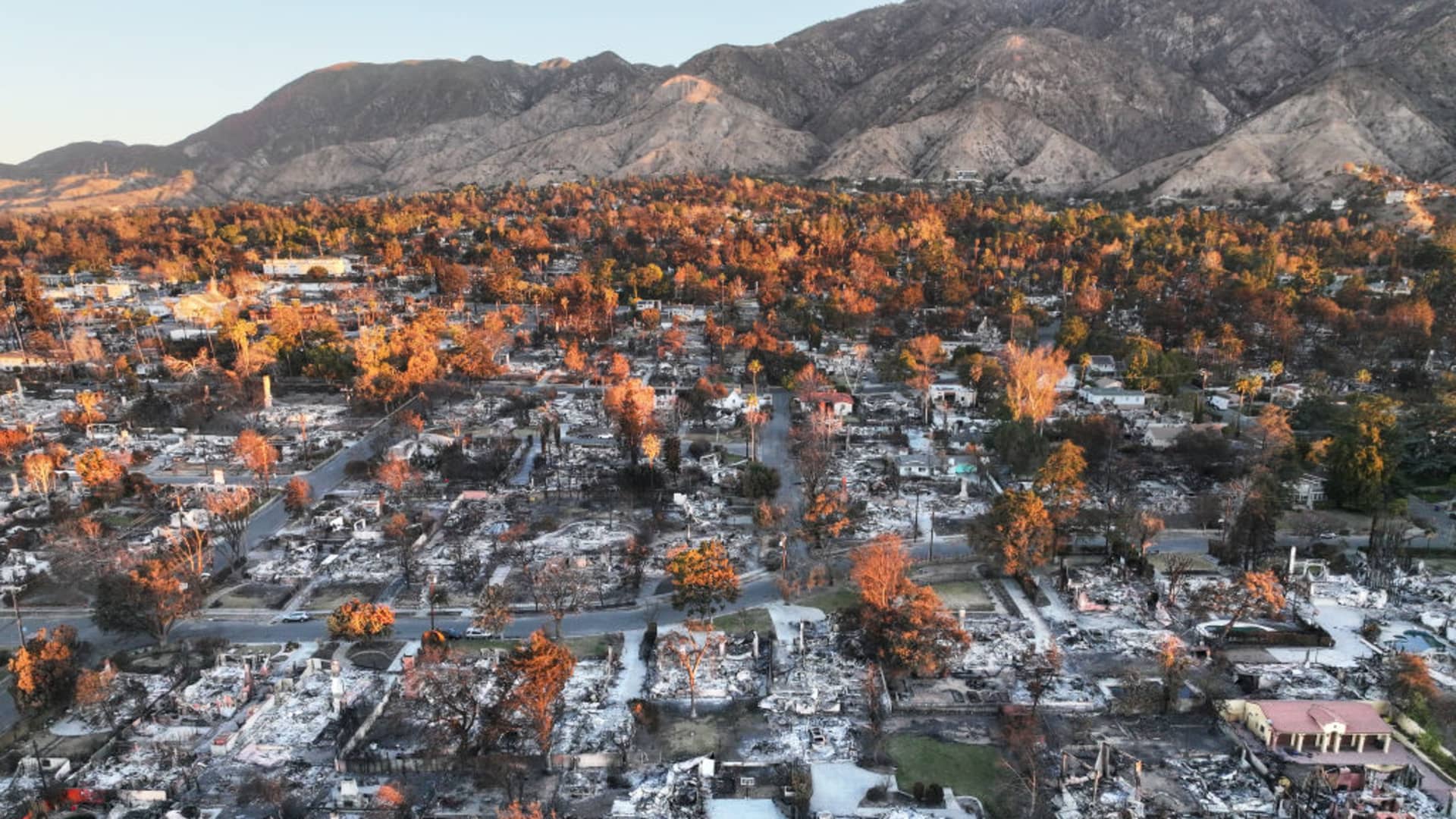Southern California Edison Faces Scrutiny Over Equipment’s Role in Eaton Fire
Southern California Edison (SCE) is currently under intense scrutiny following the emergence of new videos that suggest a potential link between its equipment and the devastating Eaton fire. This incident has raised critical questions regarding safety protocols, accountability, and the overall responsibility of utility companies in preventing wildfires. As California continues to grapple with the impacts of climate change and increasing wildfire risks, the scrutiny on SCE could have significant implications for the utility sector as a whole.
The Eaton Fire: A Brief Overview
The Eaton fire erupted in the heart of Southern California, consuming thousands of acres and threatening numerous communities. Firefighters worked tirelessly to contain the blaze, which was fueled by dry conditions and strong winds typical of the region’s fire season. Unfortunately, the fire resulted in property damage and displacement for many residents, prompting an urgent investigation into its causes.
Emerging Evidence: Videos and Testimonies
Recent video footage has surfaced, showing electrical equipment owned by Southern California Edison in close proximity to the areas most affected by the Eaton fire. Witnesses have reported seeing sparks and downed power lines shortly before the fire began to spread. This alarming evidence has prompted local authorities and the public to demand accountability from SCE.
- Eyewitness Accounts: Residents in the vicinity have claimed they observed unusual activity around SCE’s infrastructure just before the fire ignited.
- Video Evidence: Clips circulating on social media platforms have captured what appears to be electrical discharges from power lines, which could contribute to fire outbreaks.
Historical Context: SCE and Wildfire Incidents
This is not the first time Southern California Edison has faced scrutiny over its equipment’s role in wildfires. The utility has been implicated in several major fire events in recent years, including the devastating Thomas Fire in 2017 and the Woolsey Fire in 2018. These incidents have led to substantial legal and financial repercussions for the company, including multi-billion dollar settlements with affected residents and municipalities.
As a result, SCE has undergone significant changes in its safety protocols and operational practices. However, the recurring nature of these incidents raises questions about whether enough has been done to mitigate risks and improve accountability.
Regulatory Pressure and Accountability
The California Public Utilities Commission (CPUC) plays a crucial role in overseeing utility companies like SCE. Following the Eaton fire, the CPUC is expected to conduct a thorough investigation into the utility’s practices, examining whether they adhered to established safety protocols. The outcomes of this investigation could lead to increased regulatory pressure on SCE, potentially resulting in stricter regulations and greater accountability.
Key areas of focus may include:
- Maintenance Practices: Evaluating whether SCE has adequately maintained its equipment to prevent malfunctions that could lead to wildfires.
- Response Protocols: Assessing how promptly SCE responded to reports of downed lines or equipment malfunctions.
- Community Engagement: Analyzing SCE’s efforts to engage with communities at risk and inform them about safety measures.
Public Sentiment and Community Impact
The public response to the Eaton fire and SCE’s potential involvement has been one of frustration and anger. Many residents feel that utility companies have not taken sufficient responsibility for their role in exacerbating wildfire risks. This sentiment is particularly palpable among those who have lost their homes or faced evacuation due to fires linked to utility equipment.
Moreover, the financial implications of these fires extend beyond immediate property damage. Communities often face long-term recovery challenges that can take years to address, affecting local economies, mental health, and community cohesion. As scrutiny mounts on SCE, residents are hopeful for a change that will prioritize safety and accountability.
Looking Forward: What’s Next for SCE?
The road ahead for Southern California Edison is fraught with challenges. The scrutiny from the Eaton fire could lead to several outcomes, ranging from increased regulatory oversight to potential legal action from affected residents. As SCE navigates this turbulent landscape, it will be crucial for the company to take proactive steps to address concerns and bolster its reputation.
Possible actions include:
- Investing in Infrastructure: Upgrading aging equipment and implementing advanced technology to detect and prevent malfunctions before they lead to disasters.
- Enhancing Community Communication: Establishing clear lines of communication with residents, providing them with timely information about safety measures and infrastructure updates.
- Participating in Collaborative Initiatives: Working with local governments, fire agencies, and community organizations to develop comprehensive wildfire prevention strategies.
Conclusion: The Need for Change in the Utility Sector
As Southern California Edison faces scrutiny over its equipment’s role in the Eaton fire, it serves as a critical reminder of the challenges facing utility companies in a changing climate. With public trust hanging in the balance, SCE must demonstrate a commitment to safety, accountability, and community engagement. This incident could act as a catalyst for change, prompting not just SCE, but the entire utility sector, to prioritize safety and implement effective strategies to mitigate wildfire risks.
Ultimately, the strength of community ties, regulatory frameworks, and corporate responsibility will determine how Southern California Edison and similar utilities adapt to the increasing challenges posed by wildfires in the years to come.
See more Update My News



